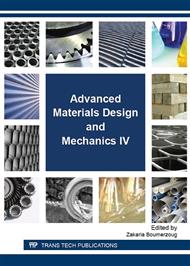p.74
p.83
p.89
p.96
p.101
p.108
p.117
p.122
p.127
Preparation of Coal-Based Columnar Activated Carbon for Removal of Benzene
Abstract:
In the paper, a series of coal-based columnar activated carbons (CCACs) for adsorption of benzene were prepared using a factorial experiment method. The CCACs prepared were characterized, and their adsorption capacities toward benzene were measured in a differential fixed-bed reactor. Besides, through a statistical method, the importance degree of preparation variables was studied, and the effects of preparation variables on benzene adsorption capacities of the CCACs were fully evaluated. It was found that pore structure of CCACs prepared was beneficial for benzene adsorption, but preparation variable in the process has little effect on the surface chemistry of CCACs prepared. Based on statistic analysis, it was revealed that among the four process variables studied for the sorbent prepared in this work, the activation temperature was found to be the most significant one for benzene adsorption capacity, next ones are the activation time and the amount of KOH, and the last one is the flow rate of water vapor and their optimal levels were 950 °C, 3.0 h, 2.5 % and 1.25 mL/g/h respectively.
Info:
Periodical:
Pages:
101-107
Citation:
Online since:
November 2016
Authors:
Price:
Сopyright:
© 2017 Trans Tech Publications Ltd. All Rights Reserved
Share:
Citation:


